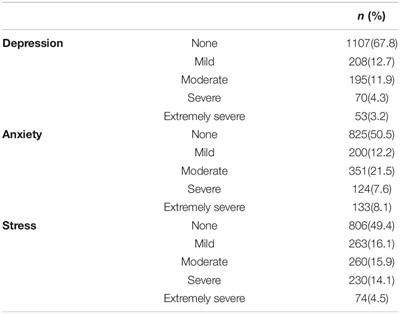Stress Inoculation Therapy (SIT) is a psychotherapy method intended to help patients prepare themselves in advance to handle stressful events successfully and with a minimum of upset. The use of the term “inoculation” in SIT is based on the idea that a therapist is inoculating or preparing patients to become resistant to the effects of stressors in a manner similar to how a vaccination works to make patients resistant to the effects of particular diseases.
Stress Inoculation Therapy is conceptually similar to Relapse Prevention methods used in addictions therapy. In SIT, patients are educated about stressful situations and the general nature of stress, the negative outcomes they may be vulnerable to experiencing when confronted with stress, and steps they can take to avoid those negative outcomes. At the conclusion of stress inoculation efforts, patients should feel like they can anticipate pitfalls that may occur during an event, and have a workable and practical plan in place for helping themselves avoid those pitfalls.
Stress inoculation has three phases:
In the initial conceptualization phase, the therapist educates the patient about the general nature of stress (offering much the same information as contained in the earlier sections of this document), and explains important concepts such as appraisal and cognitive distortion that play a key role in shaping stress reactions. The idea that people often and quite inadvertently make their stress worse through the unconscious operation of bad coping habits is conveyed. Finally, the therapist works to develop a clear understanding of the nature of the stressors the patient is facing.
Therapists are Standing By to Treat Your Depression, Anxiety or Other Mental Health Needs
Explore Your Options Today
A key part of what needs to be communicated in the SIT conceptualization stage is the idea that stressors are creative opportunities and puzzles to be solved, rather than mere obstacles. Patients are helped to differentiate between aspects of their stressors and their stress-induced reactions that are changeable and aspects that cannot change, so that coping efforts can be adjusted accordingly. Acceptance-based coping is appropriate for aspects of situations that cannot be altered, while more active interventions are appropriate for more changeable stressors.
The second phase of SIT focuses on skills acquisition and rehearsal. The particular choice of skills taught is important, and must be individually tailored to the needs of individual patients and their particular strengths and vulnerabilities if the procedure is to be effective. A variety of emotion regulation, relaxation, cognitive appraisal, problem-solving, communication and socialization skills may be selected and taught on the basis of the patient’s unique needs.
In the final SIT phase, application and follow through, the therapist provides the patient with opportunities to practice coping skills. The patient may be encouraged to use a variety of simulation methods to help increase the realism of coping practice, including visualization exercises, modeling and vicarious learning, role playing of feared or stressful situations, and simple repetitious behavioral practice of coping routines until they become over-learned and easy to act out.
SIT has been conducted with individuals, couples, and groups (both small and large). The length of intervention can be as short as 20 minutes or as long as 40 one hour weekly and biweekly sessions. In most instances, SIT consists of 8 to 15 sessions, plus booster and follow-up sessions, conducted over a 3-to-12-month period.
Stress inoculation training (SIT) is a form of cognitive behavioral therapy (CBT) for post-traumatic stress disorder (PTSD). CBT is a commonly used form of psychotherapy (talk therapy) that can help you recognize and change incorrect and/or negative thoughts that have been influencing your behavior. Exposure therapy and cognitive-processing therapy are other examples of such therapy.
Stress Inoculation Training
Just as a vaccination against a particular disease helps your body respond quickly when it’s exposed to that disease, in the same way, stress inoculation training prepares you to quickly defend against PTSD-related fear and anxiety when you’re exposed to reminders, or cues, that trigger these symptoms.
By exposing you to milder forms of stress, your confidence is boosted so that you can respond quickly and effectively when trauma-related cues occur.
This form of psychotherapy may run in 90-minute sessions over several weeks. It may be done in a therapy group; however, it’s mainly done one-on-one with a therapist.
Stress Inoculation Training Techniques
You learn coping skills. If you have PTSD and receive stress inoculation training, your therapist will help you become more aware of the specific triggers that cue your trauma-related fear and anxiety. In addition, you’ll learn a variety of coping skills that are useful in managing anxiety, such as:
- Deep breathing from your diaphragm:
There are two parts to this coping training—learning how to breathe deeply and then practicing it between therapy sessions so it becomes a healthy habit.
- Learning to silently talk to yourself:
If you’re like many people, with and without PTSD, you probably do this already, but in stress inoculation training, you learn to focus your internal talks on quickly recognizing negative, down-putting thoughts about yourself, stopping them, and changing them to positive, encouraging statements.
- Muscle relaxation training:
: You’ll learn how to relax each of your major muscle groups by tensing and releasing them in the correct way. These exercises are also recorded so you can practice them between training sessions.
- Role-playing: Here’s where you start to practice the coping techniques you’ve learned. After you and your therapist set up an anxiety-provoking situation, you role-play coping effectively using specific anxiety management strategies.
- Thinking about and changing negative behaviors:
This is where you learn to use your imagination to practice effective coping. Your therapist guides you through an entire anxiety-provoking situation in which you successfully recognize trauma-related cues and take action to prevent them from getting out of control.
You also learn to use your new skills. Once you’ve identified the cues that can trigger your anxiety and fear, your therapist will help you learn to detect and identify these reminders as soon as they appear. This lets you put your newly learned coping skills into action immediately to manage your anxiety and stress before they have a chance to get out of control.
Exposure Therapy
Over time, people with PTSD may develop fears of reminders of their traumatic event. These reminders may be in the environment. For example, certain pictures, smells, or sounds may bring about thoughts and feelings connected with the traumatic event.
These reminders may also be in the form of memories, nightmares, or intrusive thoughts. Because these reminders often bring about considerable distress, a person may fear and avoid them.
The goal of exposure therapy is to help reduce the level of fear and anxiety connected with these reminders, thereby also reducing avoidance. You may need to confront (or be exposed to) the reminders that you fear without avoiding them. This may be done by actively exposing you to reminders, for example, showing you a picture that reminds you of the traumatic event, or through the use of imagination.
By dealing with fear and anxiety, you can learn that anxiety and fear will lessen on its own, eventually reducing the extent to which these reminders are viewed as threatening and fearful. Exposure therapy is usually paired with teaching you different relaxation skills. That way you can better manage your anxiety and fear when it occurs instead of avoiding it.
Cognitive Processing Therapy
Cognitive processing therapy (CPT) is effective in treating PTSD among people who have experienced a trauma like sexual assault, child abuse, combat, or natural disasters. CPT usually lasts 12 sessions and can be viewed as a combination of cognitive therapy and exposure therapy.
CPT is like cognitive therapy in that it is based in the idea that PTSD symptoms stem from a conflict between pre-trauma beliefs about yourself and the world (for example, the belief that nothing bad will happen to you) and post-trauma information (for example, the trauma as evidence that the world is not a safe place).
These conflicts are called “stuck points” and are addressed through the next component in CPT—writing about the trauma.
Like exposure therapy, in CPT, you’re asked to write about your traumatic event in detail and then to read the story out loud repeatedly inside and outside of the session. Your therapist helps you identify and address stuck points and errors in thinking, sometimes called “cognitive restructuring.”
Errors in thinking may include, for example, “I’m a bad person” or “I did something to deserve this.” Your therapist may help you address these errors or stuck points by having you gather evidence for and against those thoughts.
Evidence
All of the treatments discussed here have been found to be successful in the treatment of PTSD, though the research is stronger in favor of trauma-focused psychotherapies like CPT and exposure therapy. Which one is right for you depends on what you feel most comfortable with.
For example, some people don’t feel comfortable with actively confronting reminders of trauma or writing about a past traumatic experience. Therefore, SIT may be a better choice. The most important thing is that you find a therapist that you feel comfortable with and trust.




